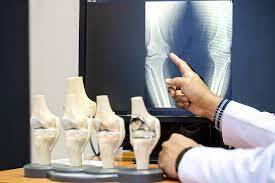Orthopedic conditions can affect individuals of all ages, from children to adults. Understanding the
causes and symptoms of these conditions is essential for early diagnosis and effective treatment. In
this blog, we delve into some of the most common orthopedic conditions in both adults and children, shedding light on their underlying causes and recognizable symptoms.
Common Orthopedic Conditions in Adults
1. Osteoarthritis:
Causes: Osteoarthritis is primarily age-related but can also result from joint injuries, obesity, and
genetic factors. Symptoms: Joint pain, stiffness, decreased range of motion, and joint swelling. It most commonly
affects the knees, hips, hands, and spine.
2. Rheumatoid Arthritis:
Causes: Rheumatoid arthritis is an autoimmune disorder where the immune system attacks the
synovial (the lining of the membranes that surround the joints). Symptoms: Joint pain, swelling, morning stiffness, and fatigue. It often affects the wrists, knees, and fingers on both sides of the body.
3. Fractures:
Causes: Fractures occur due to trauma or excessive force applied to bones, such as falls, accidents,
or sports injuries. Symptoms: Pain, swelling, deformity, and difficulty using the affected limb. Fractures can vary in
severity, from hairline fractures to complete breaks.
4. Scoliosis:
Causes: Scoliosis often develops during adolescence and has no known single cause. It can be
hereditary, idiopathic (no apparent cause), or related to neuromuscular conditions.
Symptoms: An abnormal curvature of the spine, uneven shoulder or hip levels, and back pain.
Severe cases may affect lung and heart function.
5. Rotator Cuff Tears:
Causes: Rotator cuff tears can result from aging, repetitive shoulder movements, and acute injuries.
Symptoms: Shoulder pain, weakness, and limited range of motion, especially when lifting or
reaching overhead. Common Orthopedic Conditions in Children
1. Developmental Dysplasia of the Hip (DDH):
Causes: DDH occurs when the hip joint doesn't develop properly. It can be genetic or related to fetal
positioning during pregnancy. Symptoms: In infants, it may not show visible symptoms. In older children, limping, leg length
discrepancy, or hip instability may be noticeable.
2. Juvenile Idiopathic Arthritis (JIA):
Causes: JIA is an autoimmune disorder with an unknown cause. Genetic factors may play a role.
Symptoms: Joint pain, swelling, morning stiffness, and fever. JIA can affect multiple joints and may
lead to growth problems.
3. Osgood-Schlatter Disease:
Causes: This condition is common in active adolescents and results from repetitive stress on the
growth plate of the shinbone. Symptoms: Knee pain and swelling, especially during physical activity.
4. Sever Disease: Causes: Sever disease occurs when the growth plate in the heel bone is irritated, often due to repetitive stress during growth spurts. Symptoms: Heel pain, limping, and discomfort during physical activities.
5. Pediatric Fractures:
Causes: Children bones are more flexible than adults making them prone to greenstick fractures
(incomplete fractures) or fractures from falls and sports injuries.Symptoms: Pain, swelling, deformity, and difficulty using the affected limb.
Conclusion
Orthopedic conditions can affect individuals of all ages and have various causes and symptoms. Early
diagnosis and appropriate treatment are crucial for managing these conditions effectively. If you or
your child experiences any of the symptoms mentioned above, it essential to consult a healthcare
professional, such as an orthopedic specialist, for a proper evaluation and personalized treatment
plan. Understanding these common orthopedic conditions empowers individuals and parents to take
proactive steps toward better musculoskeletal health.



